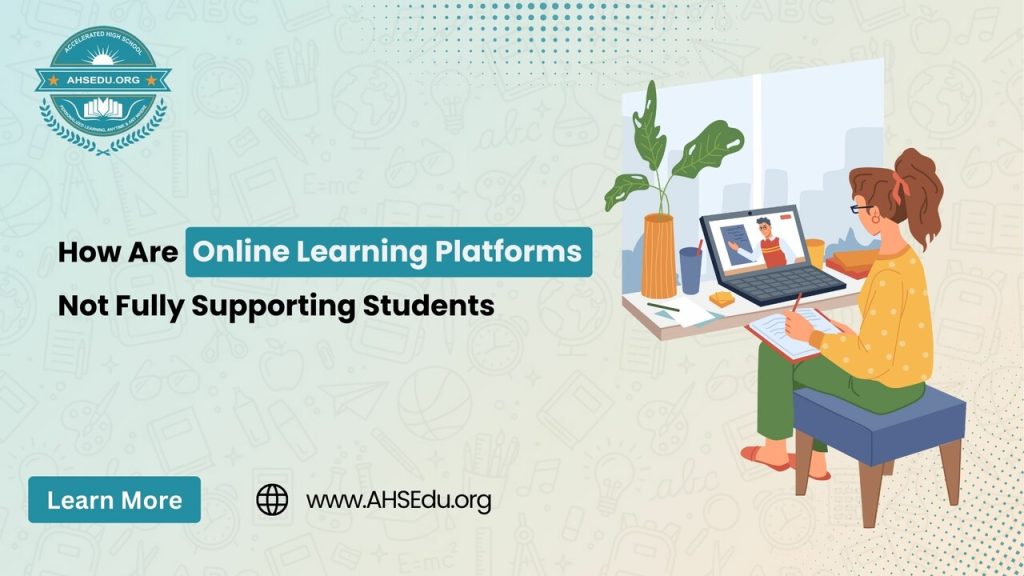
The shift to online learning has given students unprecedented access to educational content, but it has also exposed major support gaps. Many global e-learning platforms deliver lectures online without sufficient interactivity or guidance. In practice, students often watch videos passively and lack timely feedback. For example, major providers like Coursera and Udacity essentially reproduce traditional college lectures online, suffering “a lack of active learning or effective instructional design, and a lack of interactivity or scaffolding.” Similarly, even popular K–12 resources such as Khan Academy have been criticized for having “unclear organization” and “insufficient learner support.”
Key Issues with Traditional E-Learning:

These shortcomings have real consequences. Traditional self-paced courses see only about 10–15% of students complete them. Passive formats without coaching lead to high abandonment. Conversely, interactive, coached programs can boost completion to over 70%. Inadequate support also risks student well-being: prolonged isolation and workload can cause anxiety and depression. Without parent or teacher intervention, learners who feel unsupported often fall behind – research shows students without academic supervision are 34% more likely to drop out.
Impacts on Students and Families
When online platforms don’t fully support learners, the results affect both achievement and well-being. Studies found many students frustrated with emergency remote learning: over a third reported dissatisfaction, citing factors like distraction and mental fatigue. Disengaged learners tend to avoid coursework; one nationwide survey saw a significant percentage of students wholly unresponsive during the school day. In practical terms, lack of structure and support can translate into missed concepts, lower grades, and stalled skill development.
For families, the gap can be even more acute. Parents frequently worry that simple video lectures won’t keep their children engaged or that they’ll “fall through the cracks” without accountability. Traditional platforms rarely provide parents with dashboards or reports; families must guess how much a child is actually learning. This uncertainty is worrisome: in fact, parent involvement is crucial to success. Students with engaged, supportive parents have much better outcomes – 81% are more likely to graduate high school and have higher aspirations. Conversely, lack of parental oversight greatly increases dropout risk.
How AHS Education Solves These Challenges
AHS Education was built to address exactly these gaps. Designed for K–5 learners, AHS combines interactive story-based videos, embedded quizzes, and parent tools to create a supportive environment.

AHS vs. Other Platforms
While many platforms emphasize content quantity, AHS emphasizes quality of engagement and support. For instance, Khan Academy and similar sites offer excellent free videos, but they do not require answers from students or involve parents – the learning remains largely passive. Coursera-style programs for youth are rare and often still use traditional lecture formats. AHS fills this niche by combining free, curriculum-aligned content with interactivity and oversight.
In essence, AHS builds the “coaching and interactivity” that transforms a 10–15% completion platform into one where engagement and learning are maximized (toward the 70%+ completion rate cited when support systems are added).
AHS Education is the Solution
By addressing the common pitfalls, AHS prevents the negative outcomes seen elsewhere. Children stay more engaged through games and stories – reducing stress and boredom. Parents know exactly what their child is learning, which research links to higher achievement. Adaptive lesson pacing means neither struggling nor advanced students are left behind. And offline capability ensures that even households with weak internet can keep learning uninterrupted.
Most online learning platforms, despite good intentions, still leave gaps: kids may watch videos but not truly learn, or parents may feel powerless to help. AHS Education was created to bridge that gap. Its blend of interactive video lessons, practice quizzes, parent dashboards, and flexible access directly addresses the shortcomings of other platforms. For parents, this means peace of mind: your child is engaged, supported, and mastering standards-aligned content, and you can monitor every step.
To experience AHS for free, we encourage parents to register now. AHS offers a 3-month free trial (no credit card needed) so you can see how our platform transforms learning into an engaging, supported journey.
Visit AHSEdu.org/demo-for-parents and create your free parent account today. With AHS, your child’s online learning finally gets the support it needs – interactive lessons, clear feedback, and your guidance all in one place.
Register now and join the thousands of parents who have turned online learning into a success story for their children.

AHSEDU.org offers personalized learning for every student. With a curriculum standardized with USA State Standards, Free interactive videos, Fun and interactive learning content, Constructive assessments, and take-home worksheets we address the unique educational needs of each learner to ensure success.